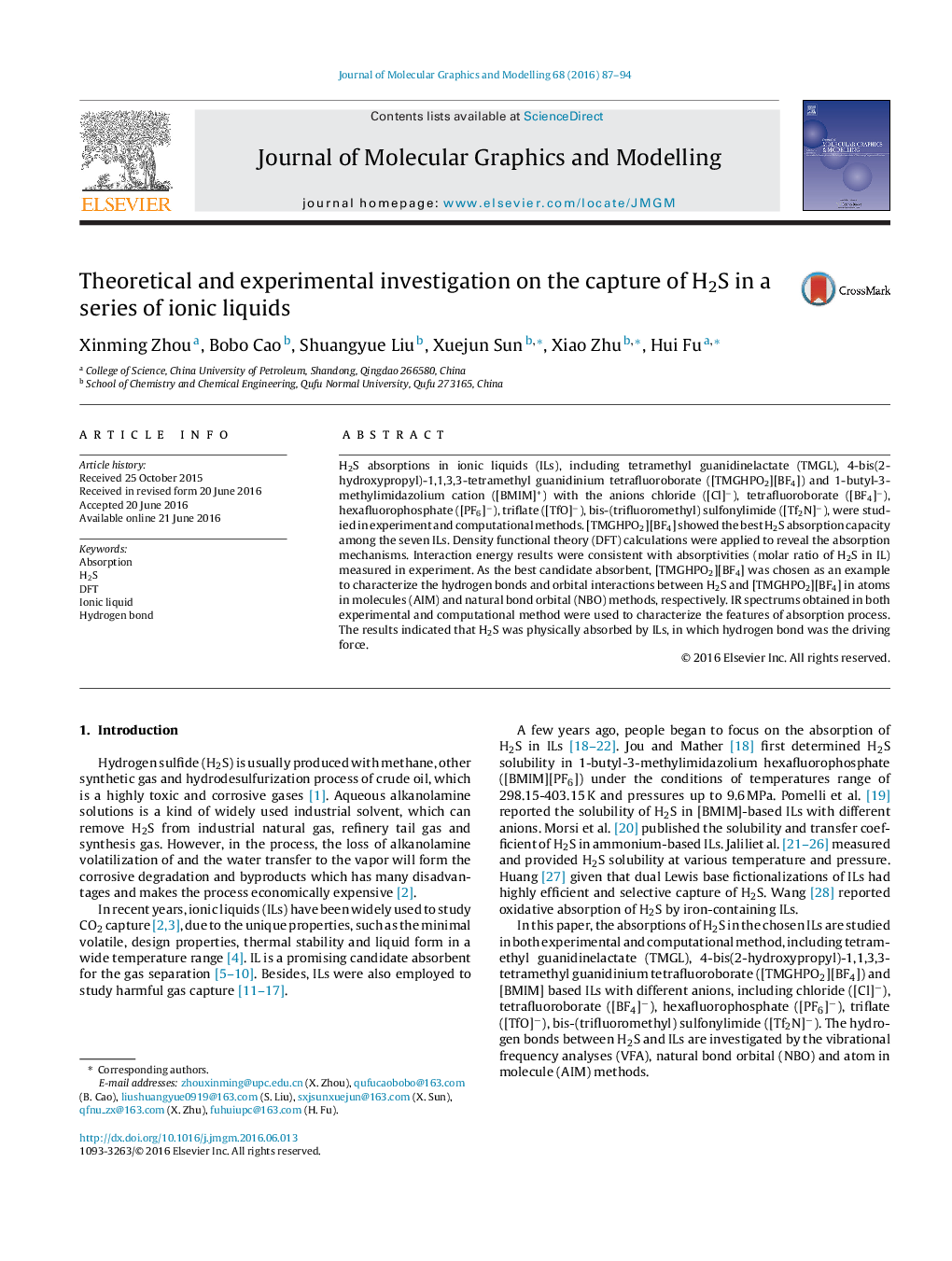| کد مقاله | کد نشریه | سال انتشار | مقاله انگلیسی | نسخه تمام متن |
|---|---|---|---|---|
| 443222 | 692690 | 2016 | 8 صفحه PDF | دانلود رایگان |
• Absorptivity of H2S in seven ionic liquids was measured in experiment method and confirmed by IR spectra.
• The H2S-IL complexes were systematically studied at B3LYP/6-311++G(d,p) level.
• Both experimental and theoretical results showed hydrogen bonds were the driving force of H2S absorption in ILs.
• The nature of hydrogen bonds was further studied in natural bond orbital and atoms in molecules methods.
H2S absorptions in ionic liquids (ILs), including tetramethyl guanidinelactate (TMGL), 4-bis(2-hydroxypropyl)-1,1,3,3-tetramethyl guanidinium tetrafluoroborate ([TMGHPO2][BF4]) and 1-butyl-3-methylimidazolium cation ([BMIM]+) with the anions chloride ([Cl]−), tetrafluoroborate ([BF4]−), hexafluorophosphate ([PF6]−), triflate ([TfO]−), bis-(trifluoromethyl) sulfonylimide ([Tf2N]−), were studied in experiment and computational methods. [TMGHPO2][BF4] showed the best H2S absorption capacity among the seven ILs. Density functional theory (DFT) calculations were applied to reveal the absorption mechanisms. Interaction energy results were consistent with absorptivities (molar ratio of H2S in IL) measured in experiment. As the best candidate absorbent, [TMGHPO2][BF4] was chosen as an example to characterize the hydrogen bonds and orbital interactions between H2S and [TMGHPO2][BF4] in atoms in molecules (AIM) and natural bond orbital (NBO) methods, respectively. IR spectrums obtained in both experimental and computational method were used to characterize the features of absorption process. The results indicated that H2S was physically absorbed by ILs, in which hydrogen bond was the driving force.
Absorptivity of H2S in seven ionic liquids was studied in DFT method and experiments. The computational results showed that hydrogen bonds were the driving force of H2S absorption in ILs, which is consistent with the results of IR spectra.Figure optionsDownload high-quality image (136 K)Download as PowerPoint slide
Journal: Journal of Molecular Graphics and Modelling - Volume 68, July 2016, Pages 87–94
